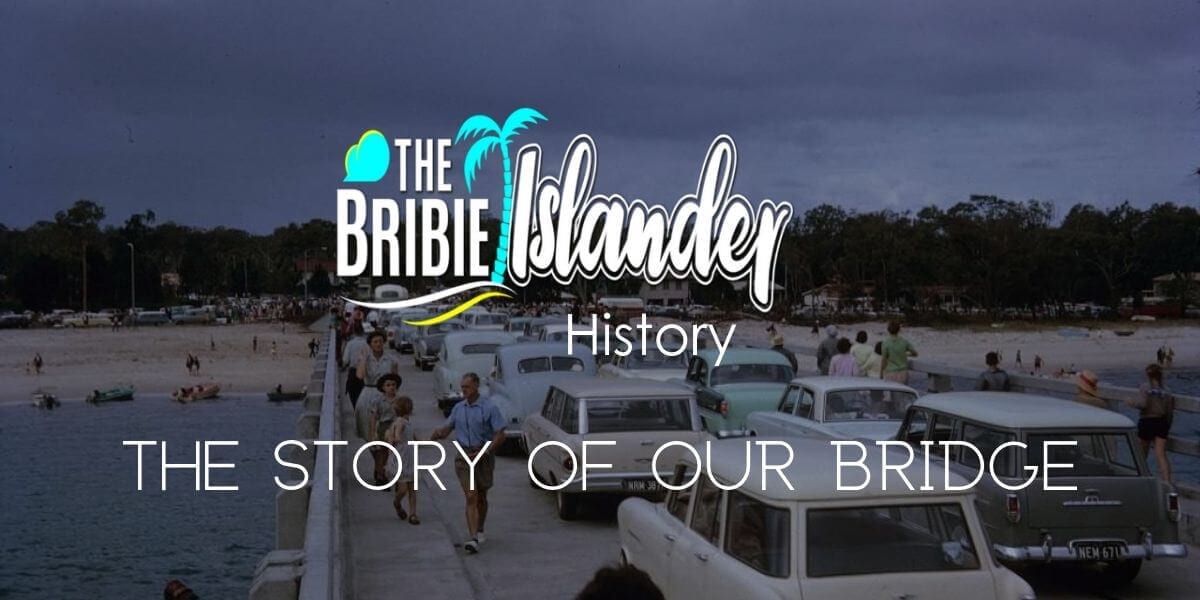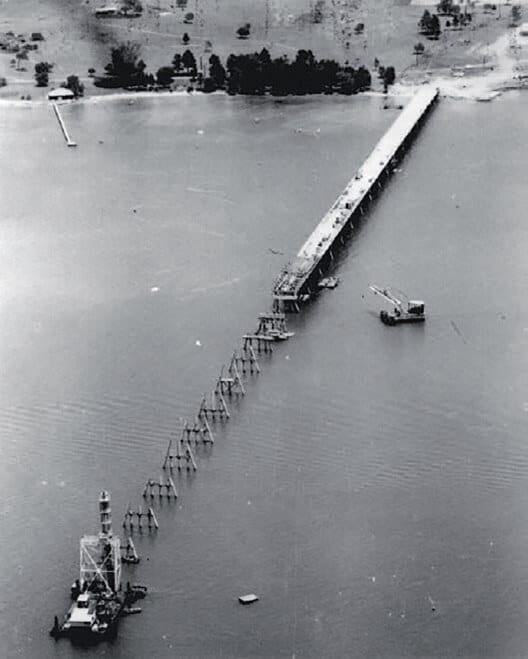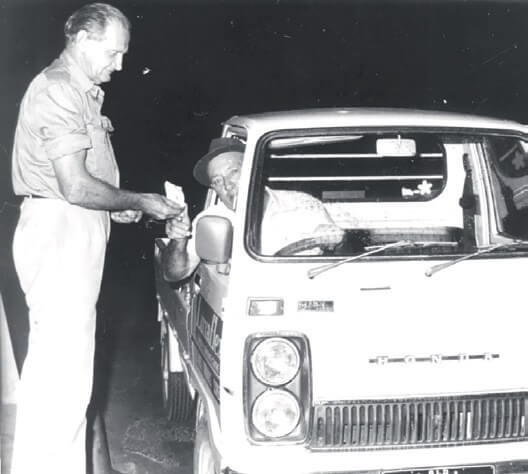Tags: Bribie Island Bridge. History. Historical. Landmarks. Queensland. Australian
With community concern being expressed about building another Bribie Bridge, it is appropriate to remind you about how the existing Bridge came into being 56 years ago, and some of the social issues that resulted from that. Another bridge will certainly be constructed at some future time, but will it be an addition or a replacement?. Previous Engineering surveys indicate that the present Bridge is adequate until about 2031.
There were even proposals back in the 1970s for a second bridge to be built over the Passage far to the north, using Egg Island as a platform. Current thinking is a new Bridge would be constructed parallel to the existing one, about 15 metres north. I am not going to speculate about where, when and what size a new Bridge might be, but simply to remind readers that such decisions should be driven by cost, political commitment and providing solutions to clearly defined and agreed to needs.
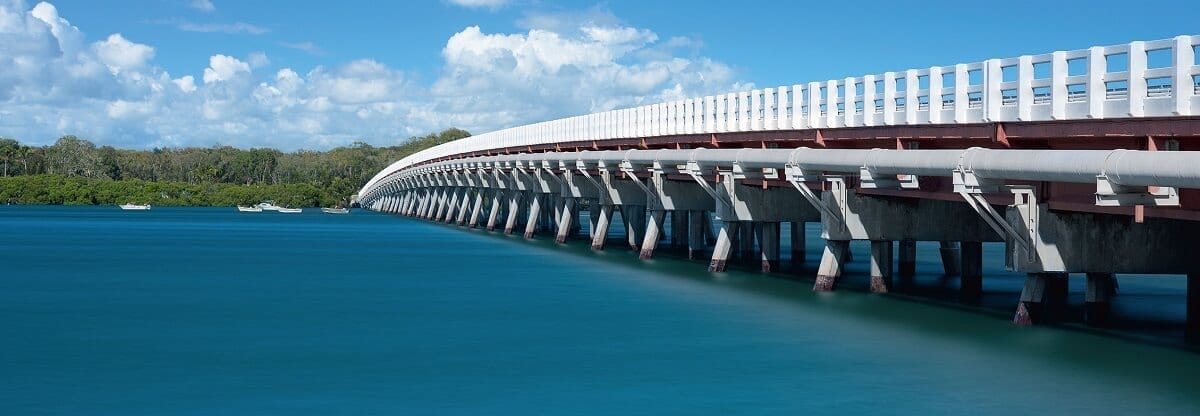 50 years of Private Enterprise transport
50 years of Private Enterprise transport
From the start of the development of Bribie island as a residential and tourist destination access and transport was entirely provided by private enterprise. Back in 1912, when there were just 25 residents, the Brisbane Tug & Steamship Co. leased land at Bongaree, had the Steamship Koopa built in the UK, built the Bongaree Jetty and began regular trips for visitors from Brisbane via Redcliffe.
Thousands of people came to camp at Bongaree but it was 12 years before the first private company road was built from Bongaree to Woorim. This road had a Toll placed on it, and initially, it was a very basic truck and bus services as there were few if any private cars on Bribie. Tourism peaked in the 1930s when there were more people coming to camp and stay in the few Bribie guest houses, than the entire population of Caboolture Shire. All of this happened as a result of private enterprise investment.
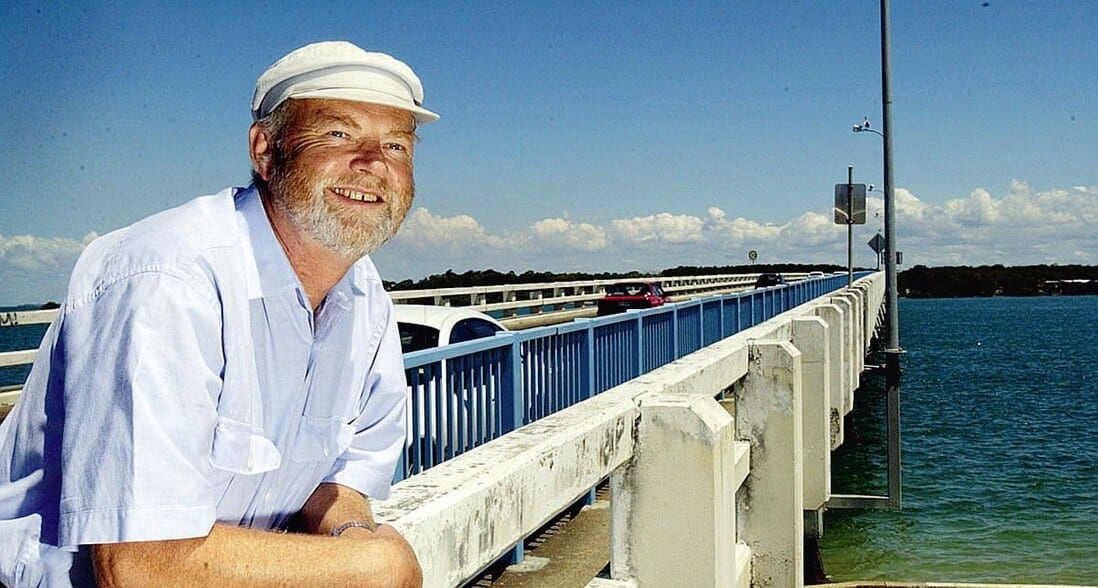 During World War Two (1939/45) most residents and tourists were evacuated from Bribie and it was taken over the by the military, and the steamships were requisitioned into War service. The first road was constructed from Caboolture to Toorbul Point and a large military training camp was established at Toorbul (now Sandstone) Point, and Defence installations built on Bribie Island. Barges were used for military personnel and vehicular transport, and after the war, these barges were purchased by Bribie residents and began operation as private Car Ferries.
During World War Two (1939/45) most residents and tourists were evacuated from Bribie and it was taken over the by the military, and the steamships were requisitioned into War service. The first road was constructed from Caboolture to Toorbul Point and a large military training camp was established at Toorbul (now Sandstone) Point, and Defence installations built on Bribie Island. Barges were used for military personnel and vehicular transport, and after the war, these barges were purchased by Bribie residents and began operation as private Car Ferries.
The first mention of a Bridge to Bribie was made in 1947 by Queensland Premier Edward Hanlon when Development funds were announced, and he suggested a Bridge. However, nothing happened then, and it was 10 years later in 1957 when Premier Vince Gair spoke about a possible “Pilot Station” being built on Bribie Island for shipping in and out of Brisbane. In the 1957 State Election campaign opposition leader, Frank Nicklin promised Bribie islanders “If I am returned to office I will build you a bridge”.
Frank Nicklin was elected Premier, but his first action was to approve a “Pilot Station” to be constructed at Mooloolaba, in his own electorate. From 1957 to 1959 there was a lot of agitation, public meetings and deputations regarding Nicklin’s promise of a Bridge to Bribie Island. In 1958 a proposal was made by developer Alfred Grant Pty. Ltd. to obtain a large area of Crown Land on Bribie in return for building a free bridge to Bribie.
This offer was never taken up. In 1959 the State Government made an official announcement that Tenders would be called for the construction of a Bridge to Bribie. A year later a contract was awarded to K.D.Morris to construct a bridge for 358,000 pounds ($716,000). Construction started in July 1961 and in October 1963, after many years of political wrangling the Bridge was opened.
A Bridge too Far
During the post-war period, private motor cars had become increasingly popular, and the long steamship trips from Brisbane were no longer attractive. The Tug Co. relinquished their Steamships and assets on Bribie in 1953, and an attempt was made to maintain the service by a few residents who purchased the SS Koopa. It too soon failed, and from 1954 to 1963 motor vehicles by private car ferry was the only access to Bribie. The resident population of Bribie was then about 500 people and the car ferry cost was an expensive 10 shillings return.
There were increasingly long queues of cars waiting to get on and off the island. Building the Bribie Island bridge was a challenging job from 1961 to 1963, watched with great interest by residents and visitors alike. A long-awaited bridge would certainly transform the future of the island. With 206 concrete piles 26m long to be accurately driven at different angles 10m into the sea bed, 104 girders weighing 12 tons each to be erected over 38 spans, it was the longest precast prestressed concrete bridge in Australia with an 832-metre span.
A most impressive piece of Engineering produced a structure that was economical, durable and requiring minimum maintenance. The Bridge was officially opened by Premier Nicklin on 19th October 1963. However, the years of promises and waiting, and the planned celebrations were crushed by the last minute announcement of a very expensive Toll for crossing the Bridge. In June 1963, just weeks before opening, and in the middle of plans for great celebrations, the Government announced that there would be a toll of 10 shillings ($1) return for crossing the bridge.
1963 Bridge Toll was $14.70 in today’s money.
This was the same expensive cost as the car Ferry, and ten times higher than the toll on the Hornibrook highway and the Storey Bridge. Ten shillings was a lot of money in those days and would go a long way towards buying Petrol for a return trip to the Gold or Sunshine Coast.
After years of expectation of the bridge opening up a new era of development and tourism on Bribie, the expensive Toll would, in fact, be a deterrent to development. It was the most expensive road toll of any in Australia!! The 10 shillings ($1) Toll was equivalent to $14;70 in today’s money.
Community reaction to paying for Bridge
Everyone was outraged at this last minute Political announcement. After years of planning and preparation the “Celebration Committee” disbanded and for a while, it looked as if the opening event would be boycotted. However, the opening day was a very special occasion with thousands turning out to see the colourful Parade of floats, vehicles, procession, surf carnival and Black Tie Ball.
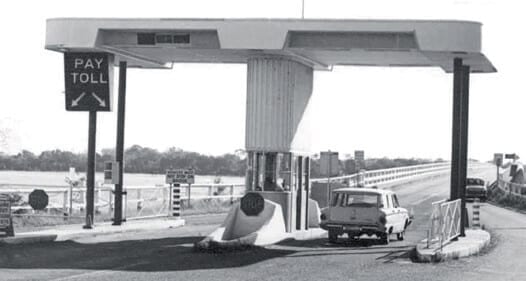
Bridge Toll Booth 1964
A plaque was unveiled and Premier Nicklin announced that “it was not the Government’s intention to keep the Toll any longer than necessary.” This was all too late and people felt cheated and deceived by this blow to Bribie’s long-promised development. Despite the disappointment 14,000 cars paid the toll to cross the bridge in the first week, it was open, for a new experience of Bribie.
Further disappointment followed as these new “Paying Guests”, as the residents called them, found that the infrastructure and amenities were totally inadequate. Roads, Parking, Toilets, Shops, Food outlets and street signage were just not up to expectations. Development plans and expected increase in residents just did not eventuate as expected, and the bridge was nicknamed the “Ned Kelly Bridge” as it was felt to be highway robbery.
The Bridge Toll remained in place for 12 years and was finally lifted in 1975 when the Government announced that the Bridge had been paid for. When decimal currency was introduced in 1966 the 10 shilling Toll became $1, and throughout the 12 years, there were constant demands for concessions and reductions, some of which were eventually granted for Bribie residents. When the bridge was opened in 1963 the resident population was about 700 people, and 12 years later in 1975, there were just 2000 residents.
Bridge Last Toll being paid 1975
A Plan for Bribie…. and the VOICE of the PEOPLE.
Back in those days, there were two elected representatives of Bribie on the Caboolture Shire Council. The Bridge had been a State Government project, but there were many issues with the Council that required appropriate action. Electing the right people to represent Bribie was critical.
This quote from the local “Bribie Star” newspaper in October 1963 sums it up. “Bribie must have strong, vigorous representation at Caboolture and it will be necessary to guard against electing representatives who, as is often the case with Shire Councillors, place the questionable honour and glory of being a Councillor before their duty to the island residents they represent.
The office of Councillor is an unenviable one that carries with it more brickbats than bouquets, but the only good Councillor is one who has the moral fibre to say “Yes” and “No” at the right time to both fellow Councillors and electors.”
BACK to the FUTURE
I think it is interesting to reflect on the political and social processes that went on nearly 60 years ago and consider the situation we are in today. Much is being said about the need for a new Bridge and improvements to the Bribie Island Road. Even if all this should happen in the next few years, or at least by the 2031 date mentioned in the Engineering review, should we anticipate a Toll to be placed on a new Bridge?
We now pay a Toll on every new Road and Tunnel constructed in recent years. That’s what happens these days……….User Pays. If that is likely to be the case then perhaps a Toll should be introduced now on the existing Bridge, to pay for a new one….. perhaps to be built sooner. What would be the impact of a Toll on the current bridge, would it seriously impact Bribie development, or perhaps reduce the traffic issues that are planned to be resolved by spending hundreds of millions of dollars on new infrastructure?
New Bridge and road improvements are inevitable but is it clear just what problem is being solved. I raised this question with a few complete strangers in coffee shops over the last few days, and these are few of the responses…..
“Seeing that the daytrippers to Bribie make little contribution to the island, except traffic congestion, why not place a toll on the bridge for all non-Bribie residents? This could be very easily done electronically or via number plate recognition. This way we would get a duplicate bridge sooner rather than later and the cost to the taxpayer would be subsidized by user pays” “The current bridge is more than adequate for local traffic use, it only gets congested on weekend with the influx of visitors.”
“Shouldn’t we get Bribie Road fixed before a new bridge?” “Toll Bridge is a great idea especially with free right of way to vehicles registered on Bribie.” “Toll bridge construction could start immediately and bring much-needed jobs to the area.” “Cost of toll could stem excessive traffic to the Island and improve the quality of life”.
More Bribie History We can all learn a lot from History. The Historical Society has monthly public meetings at the RSL Club on the second Wednesday of each month commencing at 6:30 pm with interesting guest speakers on a wide range of topics, and you can see many more photos and articles on our Blog Site at http://bribieislandhistory.blogspot. com or contact us on [email protected].
